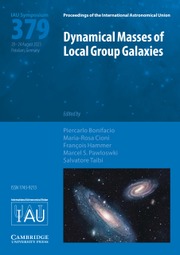No CrossRef data available.
Article contents
Precision spectrophotometry for PNLF distances: the case of NGC 300
Published online by Cambridge University Press: 06 October 2025
Abstract
The Multi-Unit Spectroscopic Explorer (MUSE) has enabled a renaissance of the planetary nebula luminosity function (PNLF) as a standard candle. In the case of NGC 300, we learned that the precise spectrophotometry of MUSE was crucial to obtain an accurate PNLF distance. We present the advantage of the integral field spectrograph compared to the slit spectrograph in delivering precise spectrophotometry by simulating a slit observation on integral field spectroscopy data. We also discuss the possible systematic shift in measuring the PNLF distance using the least-square method, especially when the PNLF cutoff is affected by small number statistics.
Information
- Type
- Contributed Paper
- Information
- Copyright
- © The Author(s), 2025. Published by Cambridge University Press on behalf of International Astronomical Union
References
Boyd, J. P. 1978, Journal of Atmospheric Sciences, 35, 2236
2.0.CO;2>CrossRef2.0.CO;2>Google Scholar
Fried, D. L. 1966, Journal of the Optical Society of America (1917–1983), 56, 1372
CrossRefGoogle Scholar
Jacoby, G. H., Ciardullo, R., Roth, M. M., Arnaboldi, M., & Weilbacher, P. M. 2023, arXiv e-prints, arXiv:2309.11603
Google Scholar


